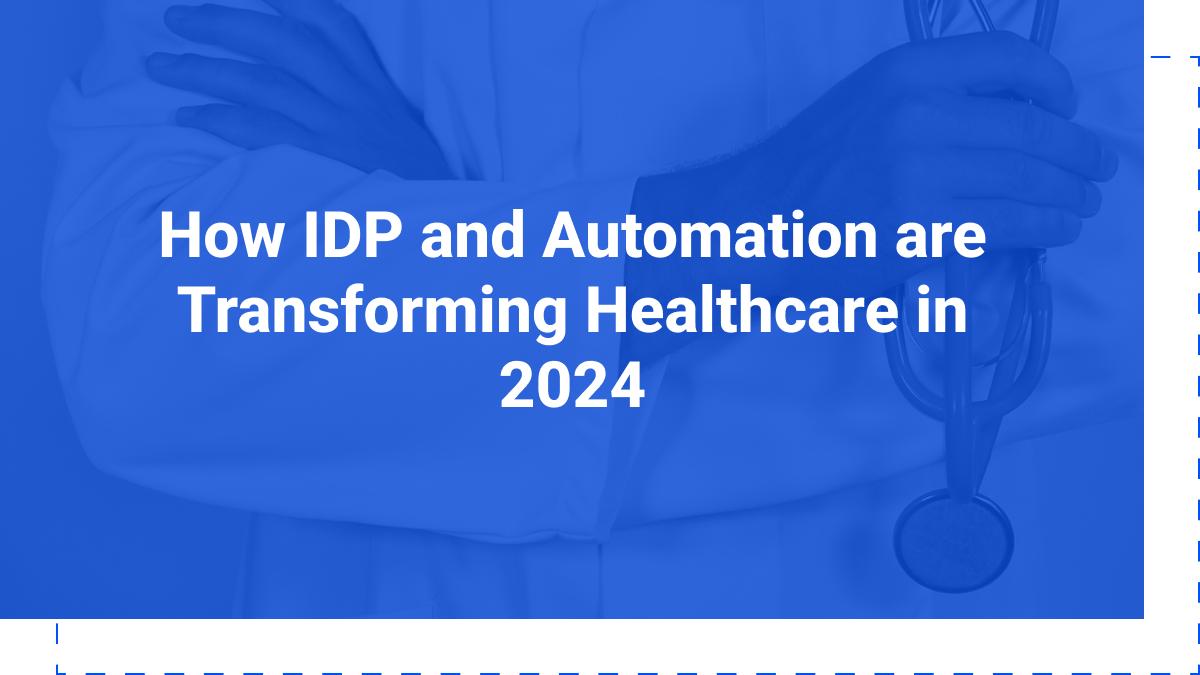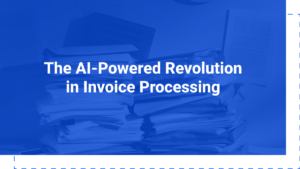How IDP and Automation are Transforming Healthcare in 2024

- Industry insights
- • April 16, 2024
- • 4 min read
Share:
Table of Contents
Let’s stay in touch
Subscribe for more content handpicked just for you.
For decades, the healthcare industry has strived to make its many burdensome, document-heavy processes easier to handle for all involved. Between patient details, insurance information, and more sensitive materials like test and lab results, healthcare organizations are tasked with successfully and securely managing all this data in pursuit of the strongest possible patient outcomes.
Today, automation — and intelligent document processing (IDP) in particular — have paved the way for the most efficient healthcare document management we’ve ever seen. Whereas workers once had to manually gather, enter, and extrapolate crucial information to help diagnose and prescribe treatments to patients, intelligent software allows organizations to do all those tedious processes far faster and more accurately.
In this new automation-powered era of healthcare, everyone is benefitting — from overworked staff to everyday people seeking better diagnostic results. Here’s how IDP is revolutionizing the process.
IDP and its Role in Healthcare Automation

As one of the automation tools being most quickly adopted across industries, IDP provides an immediate impact for document-heavy industries like healthcare. IDP is an application of automation solutions that uses AI and character recognition software to rapidly review, capture, and extract data from various documents. Coupled with the right back-end database, IDP can help then classify and manage that information for easy access inside and outside any organization.
The applications of such technology in the healthcare space are immediately apparent. Between patient forms, medical records, lab results, and numerous other documentation specific to the medical field, organizations are inundated with information — even a single patient represents a huge amount of data comprising their entire medical history. IDP takes the tediousness and error-prone manual entry out of managing that information and then goes a step further by ensuring professionals can access crucial data on the fly.
Collectively, IDP and automation expedite otherwise slow and cumbersome processes of managing patient information. Doctors can identify diagnoses faster, administrators can manage hospital data, and insurance companies can accurately pay out claims with greater ease to the benefit of patients.
Maximizing Healthcare Efficiency Through IDP and Automation

With a broad knowledge of how IDP works for healthcare organizations, let’s dig even deeper. Here’s how automation and IDP directly improve the different aspects of organizational structure in healthcare and deliver better outcomes for patients.
- Making Complex Processes Simple — Before automation, lower-level and administrative staff were stuck with the dual tasks of manually entering and managing healthcare documentation like patient histories and lab results. With IDP in the picture, these workers can easily do these tasks in a fraction of the time thanks to easy-to-use automation that does a huge chunk of that manual labor for them.
- Opening the Door for Organizational Collaboration — The healthcare industry is a vast, interconnected network of payers, providers, and hospital networks that need to constantly communicate to best serve patients while protecting their data. IDP and automation pave the way for seamless collaboration between these different checkpoints, breaking down this unnecessary friction to let medical professionals communicate with one another across networks — and keep patient care the central priority.
- Creating Centralized Hubs for Data Management — When it comes to data, centralization and open access are paramount to ease of use. IDP will extract the necessary data but also store it in a single, accessible hub to ensure that any of the collaborating organizations listed above can check in and call on that information as soon as they need it. By removing the barrier of siloed data hubs, organizations can better derive patient insights and optimize their decision-making for patients.
- Helping Organizations Rethink Their Approaches — The tangible benefits of IDP are numerous and immediately impactful, but the implementation of automation across an organization also brings a widespread cultural shift in turning what’s process-heavy into something far more simple. Healthcare companies that embrace IDP totally revitalize the way they approach healthcare documentation, data collection, and patient care — refocusing previously occupied resources to think more deeply about outcomes for patients and better results for their organizations overall.
- Ensuring Simple and Seamless Integration — Leaders in healthcare organizations are all too familiar with complicated and disparate systems and workflows in their digital infrastructure. Implementing IDP with the right automation solution partner ensures the efficient integration with the various tools and systems already in place, complementing their processes rather than slowing them down or putting undue pressure on IT teams.
Automation Brings the Future of Healthcare to Your Business
The modern healthcare organization simply can’t keep up with the volume of data without the right technology as part of their toolbelt. Implementing automation and IDP solutions transforms these companies overnight to vastly improve their patient care and administrative abilities, and enhance the infrastructure of healthcare throughout the country overall.
Reach out to Plextera today to try a demo of our IDP solutions and see firsthand how you can optimize your healthcare organization today.



